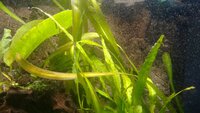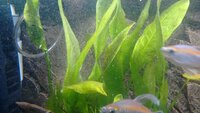Long, long before your filter is over stretched you will see that your tank is becoming overcrowded. I know that I simply cannot squeeze in one more fish.
i stopped paying attention to calculators a long time ago. Cories in the wild move in groups of thousands so why is 6 the new minimum and not 5,or 4? I do a lot of research, observe the fish instore as much as possible, and then come to my own conclusion. Plants help a lot in easing overcrowding. Some of my fish I hardly see as they like to sit in the plants and that's fine by me.
I will say though that if I were to do it all again I would have fewer species with more of each species. I think that looks more natural than pick n mix. But it's down to personal preference.
i stopped paying attention to calculators a long time ago. Cories in the wild move in groups of thousands so why is 6 the new minimum and not 5,or 4? I do a lot of research, observe the fish instore as much as possible, and then come to my own conclusion. Plants help a lot in easing overcrowding. Some of my fish I hardly see as they like to sit in the plants and that's fine by me.
I will say though that if I were to do it all again I would have fewer species with more of each species. I think that looks more natural than pick n mix. But it's down to personal preference.





